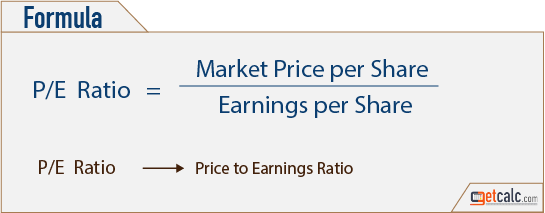
Often called the price or earnings multiple, the P/E ratio helps assess the relative value of a company’s stock. It’s handy for comparing a company’s valuation against its historical performance, against other firms within its create an invoice in word industry, or the overall market. When used in isolation, a high P/E ratio may make companies look overvalued compared to others. Since different industries have different rates of earnings growth, this may be misleading.
Price to Earnings P/E Calculator
The firm with more debt will likely have a lower P/E value than the one with less debt. However, if the business is solid, the one with more debt could have higher earnings because of the risks it has taken. A P/E ratio, even one calculated using a forward earnings estimate, doesn’t always tell you whether the P/E is appropriate for the company’s expected growth rate.
Formula Price to Earnings P/E Calculator:
The numbers used for this ratio can sometimes be tweaked by companies to highlight or mask a superficial value of stock among investors. It can be manipulated by altering cash flow or expenses, which might make a company look better than it actually is. For example, cutting costs or delaying payments can temporarily boost free cash flow, skewing the ratio. A lower P/FCF ratio might tells you that the stock is a good deal, meaning it could be undervalued. Conversely, a higher ratio might signal that the stock is expensive compared to its cash flow.
Price to Earnings Ratio
If a company reports either no earnings for a period, or reports a loss, then its EPS will be represented by a negative number. The stock market fluctuates constantly, and so the price of a stock yesterday is not always a good indication of the price tomorrow. Cautious investors don’t always trust the calculations of analysts or the figures published by a company. A simple way to think about the P/E ratio is how much you are paying for one dollar of earnings per year.
- 11 Financial may only transact business in those states in which it is registered, or qualifies for an exemption or exclusion from registration requirements.
- For example, in February 2024, the Communications Services Select Sector Index had a P/E of 17.60, while it was 29.72 for the Technology Select Sector Index.
- For instance, if the P/E ratio of a specific tech company is 30, it might seem high when compared to the overall market or the ratio of the S&P 500.
- Conversely, a higher ratio might signal that the stock is expensive compared to its cash flow.
Investor Expectations
It offers a clear, factual representation of a company’s valuation based on its recent performance. Finally, the dependence of the P/E ratio on earnings per share can be misleading at times. A company may have severe cash flow problems and still report positive earnings. The price-to-earnings ratio (P/E) of a company is compared to its peer group, comprised of comparable companies, to arrive at the implied equity value.

Does the price to free cash flow change over time?
The higher the ratio, the more expensive the stock is to investors who are buying it on expectations that they will be rewarded with large capital gains. The price-to-earnings ratio compares a company’s share price with its earnings per share. Analysts and investors use it to determine the relative value of a company’s shares in side-by-side comparisons. The two components of the P/E ratio are a company’s stock price and its earnings per share over a period of time (usually 12 months). Price/earnings ratio – often called the price to earnings ratio or the P/E ratio – is a finance indicator that measures a company’s stock price concerning earnings per share. Simply put, it shows the balance between price and earnings from the stocks.
He graduated from law school in 1992 and has written about personal finance and investing since 2007. That means there are three approaches to calculating the P/E ratio itself. Each of those three approaches tells you different things about a stock (or index). When it comes to the earnings part of the calculation, however, there are three varying approaches to the P/E ratio, each of which tell you different things about a stock. Bank of America’s P/E at 19× was slightly higher than the S&P 500, which over time trades at about 15× trailing earnings. As stated earlier, there is usually an acceptable range for the P/E ratio that must be researched and considered carefully for the purposes of investment.
Only when you benchmark it against the P/E ratio of other companies in the same industry or against the historical P/E ratio of the company itself will you be able to draw a meaningful conclusion. The PE ratio is an excellent metric to use when deciding on the stocks to invest your hard-earned money. Of course, a company that is persistently unprofitable, with a negative P/E ratio, is likely one you want to avoid as an investor.
Using a standard P/E ratio calculator might provide you with a figure for a given stock, but understanding the broader sectoral context is crucial. If an investor solely relies on the ratio of the S&P 500 as a benchmark, they might incorrectly assess whether a stock is overvalued or undervalued. If you believe in the analysts’ growth projections and the forward P/E suggests the stock is undervalued, it could signal a buying opportunity. Conversely, a high forward P/E might indicate that the stock is overvalued, considering its future earnings potential.



現在就與我們聯絡
專人為你評估最合適方案